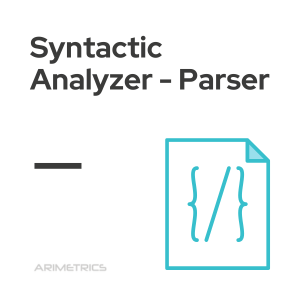 Definition:
Definition:
A parser is a tool used in natural language processing to analyze and understand the syntactic structure of a sentence or text. The goal of a parser is to determine the relationship between words and sentences in a text and their grammatical function in the context of the full text.
Applications of parsers
A parser can use different techniques to analyze text, such as top-down parsing or bottom-up parsing. These techniques are based on the creation of syntactic trees that represent the syntactic structure of the text and are used to determine the grammatical function of each word in the context of the full text.
Parsers are used in a wide variety of applications, such as natural language processing for chatbots and virtual assistants, automatic language translation, text mining and document indexing. They are also essential in the development of compilers, which convert source code written by a programmer into a machine language that can be executed by a computer.
Types of parsers
There are different types of parsers that can be used in natural language processing and other applications. Some of the most common types of parsers include:
- Top-down parsers: These parsers start with the complete syntactic structure of the text and try to divide the text into smaller fragments until they reach the individual words.
- Bottom-up parsers: These parsers start with the individual words of the text and try to combine them into larger fragments until they reach the complete syntactic structure.
- Shift-reduce parsers: These parsers use a combination of top-down and bottom-up parsing techniques to analyze text.
- Syntax tree parsers: These parsers create a syntax tree that represents the syntactic structure of the text and are used to determine the grammatical function of each word in the context of the entire text.
- Analysis tree parsers: These parsers create an analysis tree that represents the relationship between words and phrases in the text and are used to determine the grammatical function of each word in the context of the entire text.
- Regular language parsers: These parsers are used to analyze formal languages that follow a set of predefined rules and patterns. They are often used in compiler development.
- Natural language parsers: These parsers are used to analyze natural language spoken or written by people and are often used in natural language processing for chatbots and virtual assistants.
Challenges in parser development
The development of parsers presents several challenges, especially in the context of natural language processing:
- Syntactic ambiguity: Handling the ambiguity inherent in natural language, where the same sentence can have multiple syntactic interpretations.
- Linguistic variability: Adapting to the diversity of dialects, jargons and styles of natural language.
- Computational complexity: Optimize the performance of parsing algorithms to handle large volumes of text without sacrificing accuracy.
- Integration with other technologies: Integration with other natural language processing technologies, such as machine learning models and speech recognition systems.
Future of parsers
The future of parsers is closely linked to advances in artificial intelligence and natural language processing:
- Deep learning: Allows a more precise and contextualized analysis of natural language.
- Multilingual parsers: Develop parsers that work effectively in multiple languages.
- Automation and customization: More automated and customizable Parsers to meet specific industry or domain needs.
- Integration into everyday applications: Enhancing the capabilities of chatbots, virtual assistants and machine translation tools.
